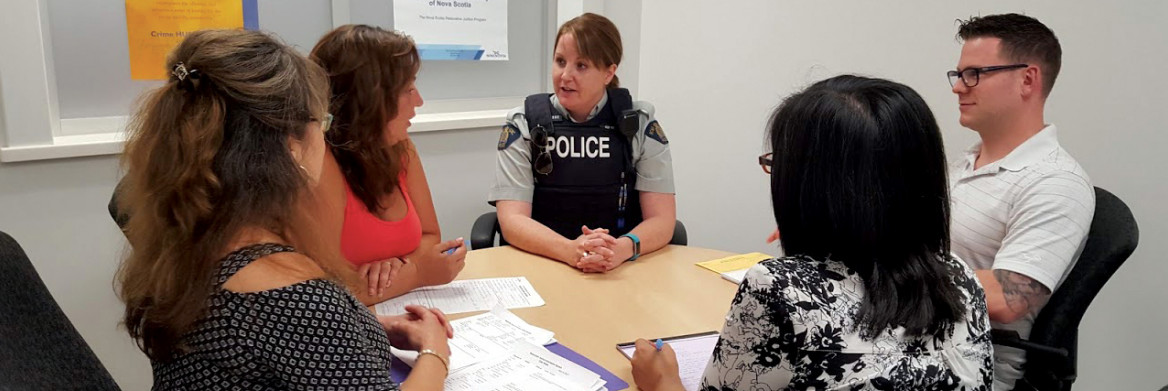One night after drinking too much, two young adults stole a Canadian flag hanging outside the Royal Canadian Legion in Colchester County, N.S. Their foolish stunt was short-lived as local police caught the pair soon after.
But instead of charging the offenders, police referred them to the province's Restorative Justice Program, which recently expanded to include adults.
"We look for people who are co-operative, who deserve a chance to avoid a criminal record,
" says Cst. Lori Thorne, court liaison officer at the Colchester County RCMP detachment. "It's not for your hardened criminals, it's just people who made bad decisions and want to fix the harm.
"
Out of court
The Restorative Justice Program has traditionally been reserved for youth offenders under the age of 18. That changed in November 2016, following several successful pilots that offered the program to adults. The program is now available to people of all ages, province-wide.
"The ultimate goal is to hold people accountable,
" says Grace Campbell, manager of the program at the Department of Justice. "It's about doing justice differently and looking at the wider context to provide a more preventative and proactive approach to crime.
"
Although the program has expanded its clientele, the goals remain the same: reduce repeat offenders, increase victim satisfaction, strengthen communities and increase public confidence in the criminal justice system.
The program takes on offences such as property crimes, mischief, assaults, fraud and break and enters. Impaired driving, sexual assault and domestic violence cases are not eligible. Offenders can be referred to the program by police pre-charge, by crown attorneys post-charge, by judges post-conviction, or by corrections and victim services after they've served their sentence.
When a case is referred to the program, correctional services or restorative justice agencies such as the Mi'kmaw Legal Support Network or John Howard Society take the case. Police agencies like the RCMP are involved in follow-up meetings with offenders, victims and members of the community.
"We talk to the accused about things they may not have considered,
" says Thorne. "How crime impacts the community, themselves, their families, police services and what the outcome could have been if they were convicted in court.
"
Thorne says sometimes it's just a matter of giving offenders resources like mental health or addictions support, helping them search for employment, or educating them about the justice system.
"It's about fulfilling people's needs to try to keep it from happening again,
" says Thorne.
Fair resolution
Restorative justice requires offenders to take responsibility for their actions, holding them accountable to victims in face-to-face meetings. The John Howard Society facilitates many of these meetings, working with all parties involved to come to a fair resolution.
"From our experience, victims who are involved in the program are more satisfied and in a better place than before,
" says Chris King, director of the central region John Howard Society of Nova Scotia. "They get to see the person who harmed them, which can lessen the fear because it humanizes them. It also validates the victim by giving them a chance to say 'this is how you hurt me.'
"
When the case of the flag thieves was referred to the Restorative Justice Program, the John Howard Society and local police met with the offenders, a community representative and a member of the Legion.
King says the Legion member was a veteran who showed up decorated in uniform and talked about his time serving in the war and the significance of the flag. Both offenders became very emotional — the woman started crying and the young man hung his head in shame.
"The veteran got to see that these were two young adults who made a foolish decision,
" says King. "And it wasn't easy for them to face this man either, they had disrespected him personally.
"
After a lengthy discussion, they agreed on a resolution: the offenders would replace the flag, write an essay describing what they did and why, and write a letter of apology to be read at the Legion's next general meeting.
"This program is providing an opportunity for offenders to learn from their mistakes and understand how crime impacts the community in a broader sense,
" says King. "It's not about punishment — it's about repairing harm, and giving victims and the community a voice.
"
